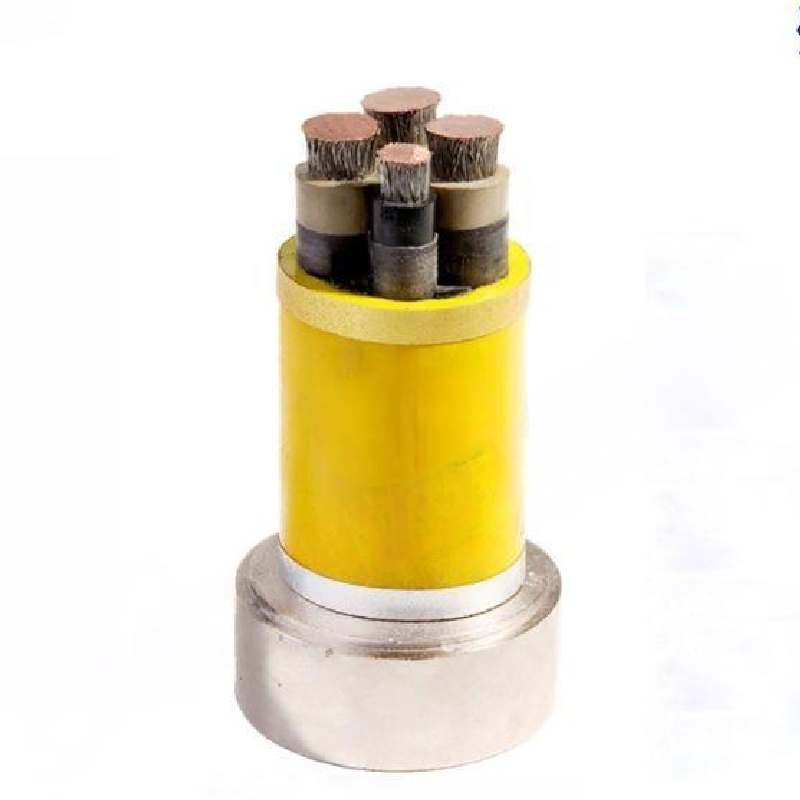Nov . 07, 2024 09:15 Back to list
Lined Check Valve for Enhanced Flow Control and System Efficiency
Understanding the Lined Check Valve A Comprehensive Overview
In various industrial applications, the safe and efficient movement of fluids is paramount. Among the equipment designed to regulate fluid flow, the lined check valve stands out as a critical component. This article aims to explore the characteristics, benefits, and applications of lined check valves, highlighting their essential role in modern engineering and fluid management.
What is a Lined Check Valve?
A lined check valve is a type of one-way valve that allows fluid to flow in one direction while preventing backflow. What sets it apart from conventional check valves is its lining material, which is specifically chosen to enhance resistance to corrosion, abrasion, and chemical reactions. Typically, these linings are made from materials such as PTFE (Polytetrafluoroethylene), rubber, or other elastomers, providing a barrier between the working fluid and the valve's metal body.
Key Features of Lined Check Valves
1. Corrosion Resistance One of the primary advantages of lined check valves is their ability to withstand harsh conditions. The lining protects the valve body from corrosive substances, making them ideal for applications involving aggressive chemicals.
2. Flow Efficiency These valves enable smooth fluid flow with minimal pressure loss. Their design ensures that they open and close efficiently, responding quickly to changes in flow direction.
3. Durability The protective lining increases the lifespan of the valve, reducing the frequency of replacements and maintenance. This durability is particularly important in industries where downtime can lead to significant losses.
4. Versatility Lined check valves can be used in various applications, including water treatment, chemical processing, and oil and gas industries. Their adaptability to different environments and fluids makes them a preferred choice for engineers and operators.
How Lined Check Valves Work
lined check valve

Lined check valves operate based on the principle of gravity and pressure differential. When fluid flows in the desired direction, the pressure pushes the valve disc or ball off its seat, allowing the fluid to pass through. If there is a reversal in flow, the pressure drops, causing the disc or ball to return to its seat and seal the valve, effectively stopping any backflow. The lining material contributes to a reliable seal, ensuring that the valve performs its function without leaking.
Applications of Lined Check Valves
1. Chemical Processing In industries where corrosive liquids are commonplace, lined check valves protect pipe systems and facilitate safe handling of these substances.
2. Water and Wastewater Treatment These valves are crucial in preventing backflow in treatment facilities, ensuring that clean water systems remain uncontaminated.
3. Oil and Gas In the exploration and transport of hydrocarbons, lined check valves are utilized to prevent reverse flow, which could lead to spills or contamination.
4. Pharmaceutical Industry Ensuring the integrity and purity of fluids in pharmaceutical manufacturing is critical. Lined check valves help maintain that integrity, preventing any leaching or contamination from the valve itself.
Maintenance and Considerations
While lined check valves are designed to be low maintenance, periodic inspection is essential. Operators should look for signs of wear or damage to the lining, as this can compromise the valve's performance. Additionally, understanding the chemical compatibility of the lining material with the fluid being handled is crucial to ensure proper operation and longevity.
Conclusion
Lined check valves are indispensable in a multitude of industries, providing reliable, safe, and efficient fluid management solutions. Their unique construction not only enhances their performance but also extends their lifespan compared to traditional valves. As industries continue to evolve and face new challenges in fluid handling, the role of lined check valves will undoubtedly become even more significant. By understanding their features, applications, and maintenance needs, professionals can ensure optimal performance and contribute to safer and more efficient industrial processes.
Share
-
Reliable Wafer Type Butterfly Valves for Every IndustryNewsJul.25,2025
-
Reliable Flow Control Begins with the Right Ball Check ValveNewsJul.25,2025
-
Precision Flow Control Starts with Quality ValvesNewsJul.25,2025
-
Industrial Flow Control ReliabilityNewsJul.25,2025
-
Engineered for Efficiency Gate Valves That Power Industrial PerformanceNewsJul.25,2025
-
Empowering Infrastructure Through Quality ManufacturingNewsJul.25,2025